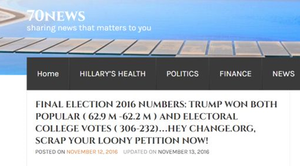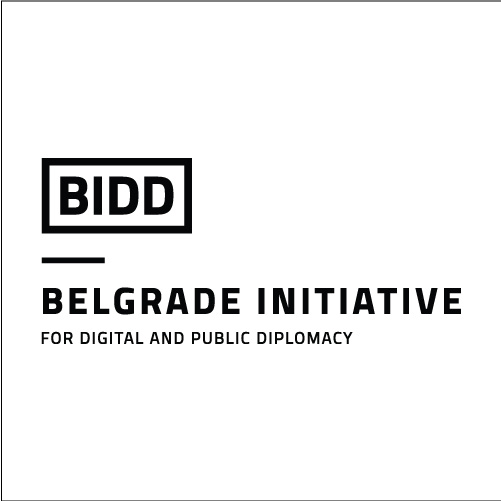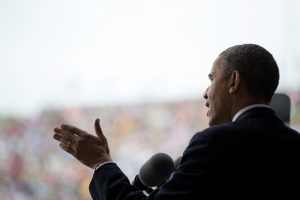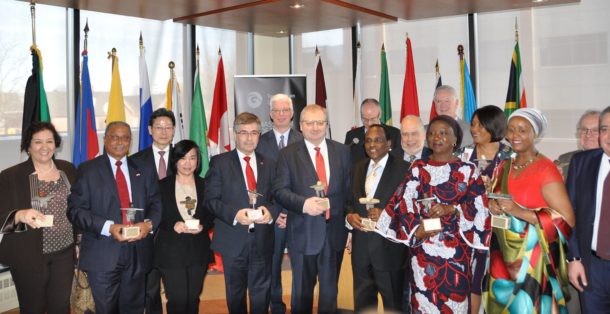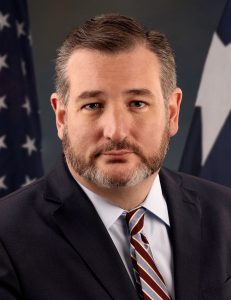Wikipedia
Excerpt:
This article is about intentionally fraudulent websites. For satirical websites, see News satire.
Further information: Fake newsFake news websites (also referred to as hoax news websites)[1][2] are Internet websites that deliberately publish fake news—hoaxes, propaganda, and disinformation purporting to be real news—often using social media to drive web traffic and amplify their effect.[3][4][5] Unlike news satire, fake news websites deliberately seek to be perceived as legitimate and taken at face value, often for financial or political gain.[6][4] Such sites have promoted political falsehoods in Germany,[7][8] Indonesia and the Philippines,[9] Sweden,[10][11] Myanmar,[12] and the United States.[13][14] Many sites originate in, or are promoted by, Russia,[3][15]Macedonia,[16][17] Romania,[18] and some individuals in the United States.[19][20]
Contents
- 1Overview of coverage
- 2Definition
- 3Pre-Internet history
- 4Prominent sources
- 5Impact
- 6Response
- 7Academic analysis
- 8See also
- 9Footnotes
- 10References
- 11Further reading
- 12External links
- 13Guides to avoid fake news online
Overview of coverage
One pan-European newspaper, The Local, described the proliferation of fake news as a form of psychological warfare.[10] Some media analysts have seen it as a threat to democracy.[8] In 2016, the European Parliament's Committee on Foreign Affairspassed a resolution warning that the Russian government was using "pseudo-news agencies" and Internet trolls as disinformation propaganda to weaken confidence in democratic values.[5]
Screenshot of a fake news story, falsely stating Donald Trump won the popular votein the 2016 U.S. election[21][22]In 2015, the Swedish Security Service, Sweden's national security agency, issued a report concluding Russia was using fake news to inflame "splits in society" through the proliferation of propaganda.[10] Sweden's Ministry of Defence tasked its Civil Contingencies Agency with combating fake news from Russia.[10] Fraudulent news affected politics in Indonesia and the Philippines, where there was simultaneously widespread usage of social media and limited resources to check the veracity of political claims.[9] German Chancellor Angela Merkel warned of the societal impact of "fake sites, bots, trolls".[8]Fraudulent articles spread through social media during the 2016 U.S. presidential election,[13][14] and several officials within the U.S. Intelligence Community said that Russia was engaged in spreading fake news.[23] Computer security company FireEye concluded that Russia used social media to spread fake news stories[24] as part of a cyberwarfare campaign.[25] Google and Facebook banned fake sites from using online advertising.[26][27] Facebook launched a partnership with fact-checking websites to flag fraudulent news and hoaxes; debunking organizations that joined the initiative included: Snopes.com, FactCheck.org, and PolitiFact.[28] U.S. President Barack Obama said a disregard for facts created a "dust cloud of nonsense".[29] Chief of the Secret Intelligence Service (MI6) Alex Younger called fake news propaganda online dangerous for democratic nations.[30]
Definition
Examples of fake news websites








Pre-Internet history
Unethical journalistic practices existed in printed media for hundreds of years before the advent of the Internet.[34][35][36] Yellow journalism, reporting from a standard which is devoid of morals and professional ethics, was pervasive during the time period in history known as the Gilded Age, and unethical journalists would engage in fraud by fabricating stories, interviews, and made-up names for scholars.[35][34]During the 1890s, the spread of this unethical news sparked violence and conflicts.[34] Both Joseph Pulitzer and William Randolph Hearst fomented yellow journalism in order to increase profits, which helped lead to misunderstandings which became partially responsible for the outset of the Spanish–American War in 1898.[37] J.B. Montgomery-M’Govern wrote a column harshly critical of "fake news" in 1898, saying that what characterized "fake news" was sensationalism and “the publication of articles absolutely false, which tend to mislead an ignorant or unsuspecting public.”[38]A radio broadcast from Gleiwitz by German soldier Karl Homack, pretending to be a Polish invader who had captured the station, was taken at face value by other stations, in Germany and abroad, fueling Adolf Hitler's declaration of war on Polandthe next day.[39] According to USA Today, newspapers which have a history of commonly publishing fake news have included Globe, Weekly World News, and The National Enquirer.[37] …
Overview of coverage
One pan-European newspaper, The Local, described the proliferation of fake news as a form of psychological warfare.[10] Some media analysts have seen it as a threat to democracy.[8] In 2016, the European Parliament's Committee on Foreign Affairspassed a resolution warning that the Russian government was using "pseudo-news agencies" and Internet trolls as disinformation propaganda to weaken confidence in democratic values.[5]


Screenshot of a fake news story, falsely stating Donald Trump won the popular votein the 2016 U.S. election[21][22]In 2015, the Swedish Security Service, Sweden's national security agency, issued a report concluding Russia was using fake news to inflame "splits in society" through the proliferation of propaganda.[10] Sweden's Ministry of Defence tasked its Civil Contingencies Agency with combating fake news from Russia.[10] Fraudulent news affected politics in Indonesia and the Philippines, where there was simultaneously widespread usage of social media and limited resources to check the veracity of political claims.[9] German Chancellor Angela Merkel warned of the societal impact of "fake sites, bots, trolls".[8]Fraudulent articles spread through social media during the 2016 U.S. presidential election,[13][14] and several officials within the U.S. Intelligence Community said that Russia was engaged in spreading fake news.[23] Computer security company FireEye concluded that Russia used social media to spread fake news stories[24] as part of a cyberwarfare campaign.[25] Google and Facebook banned fake sites from using online advertising.[26][27] Facebook launched a partnership with fact-checking websites to flag fraudulent news and hoaxes; debunking organizations that joined the initiative included: Snopes.com, FactCheck.org, and PolitiFact.[28] U.S. President Barack Obama said a disregard for facts created a "dust cloud of nonsense".[29] Chief of the Secret Intelligence Service (MI6) Alex Younger called fake news propaganda online dangerous for democratic nations.[30]
Definition
Examples of fake news websites








Pre-Internet history
Unethical journalistic practices existed in printed media for hundreds of years before the advent of the Internet.[34][35][36] Yellow journalism, reporting from a standard which is devoid of morals and professional ethics, was pervasive during the time period in history known as the Gilded Age, and unethical journalists would engage in fraud by fabricating stories, interviews, and made-up names for scholars.[35][34]During the 1890s, the spread of this unethical news sparked violence and conflicts.[34] Both Joseph Pulitzer and William Randolph Hearst fomented yellow journalism in order to increase profits, which helped lead to misunderstandings which became partially responsible for the outset of the Spanish–American War in 1898.[37] J.B. Montgomery-M’Govern wrote a column harshly critical of "fake news" in 1898, saying that what characterized "fake news" was sensationalism and “the publication of articles absolutely false, which tend to mislead an ignorant or unsuspecting public.”[38]A radio broadcast from Gleiwitz by German soldier Karl Homack, pretending to be a Polish invader who had captured the station, was taken at face value by other stations, in Germany and abroad, fueling Adolf Hitler's declaration of war on Polandthe next day.[39] According to USA Today, newspapers which have a history of commonly publishing fake news have included Globe, Weekly World News, and The National Enquirer.[37] …
Counter-Disinformation Team
The United States Department of State planned to use a unit called the Counter-Disinformation Team, formed with the intention of combating disinformation from the Russian government, and that it was disbanded in September 2015 after department heads missed the scope of propaganda before the 2016 U.S. election.[51][52] The U.S. State Department put eight months into developing the unit before scrapping it.[51] It would have been a reboot of the Active Measures Working Group set up by Reagan Administration.[52][53] The Counter-Disinformation Team was set up under the Bureau of International Information Programs.[52][53] Work began in 2014, with the intention to combat propaganda from Russian sources such as the RT network (formerly known as Russia Today).[52][53] U.S. Intelligenceofficials explained to former National Security Agency analyst and counterintelligence officer John R. Schindler that the Obama Administration decided to cancel the unit as they were afraid of antagonizing Russia.[52][53] U.S. Undersecretary of State for Public Diplomacy Richard Stengel was point person for the unit before it was canceled.[52][53] Stengel previously wrote about disinformation by RT.[54][55][56] …
Original Article


